#Francis Bacon - Study after Velázquez's Portrait of Pope Innocent X (1953)
Text
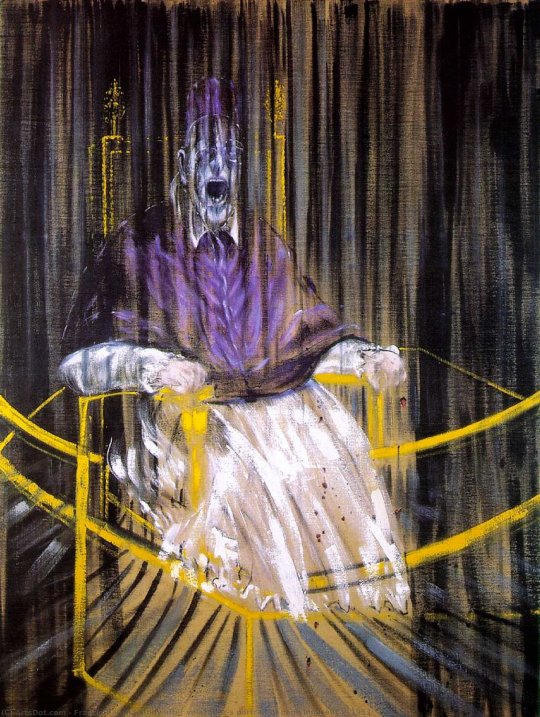
4 notes
·
View notes
Text

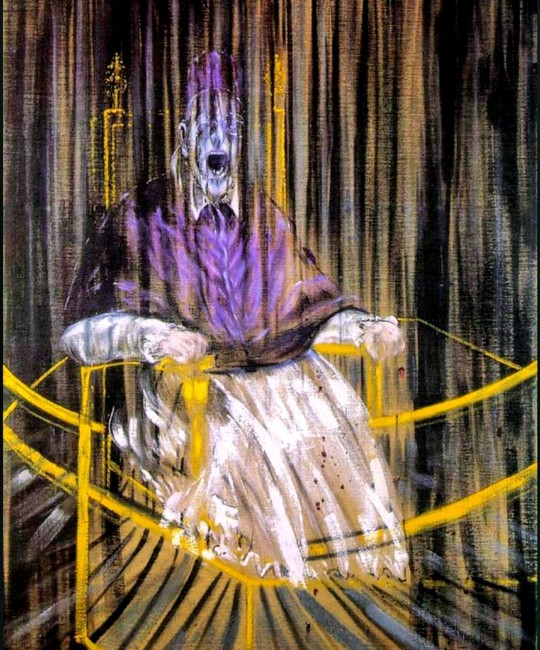
• Portrait of Innocent X (1650) by Diego Velázquez.
• Study after Velázquez's Portrait of Pope Innocent X (1953) by Francis Bacon.
#art history#culture#surreal#art#1950s#diego velazquez#portrait#francis bacon#17th century#dark#macabre#expressionism#1600s#oil painting#20th century#spain#history#oil on canvas#artwork#psychology#⚡
2K notes
·
View notes
Text
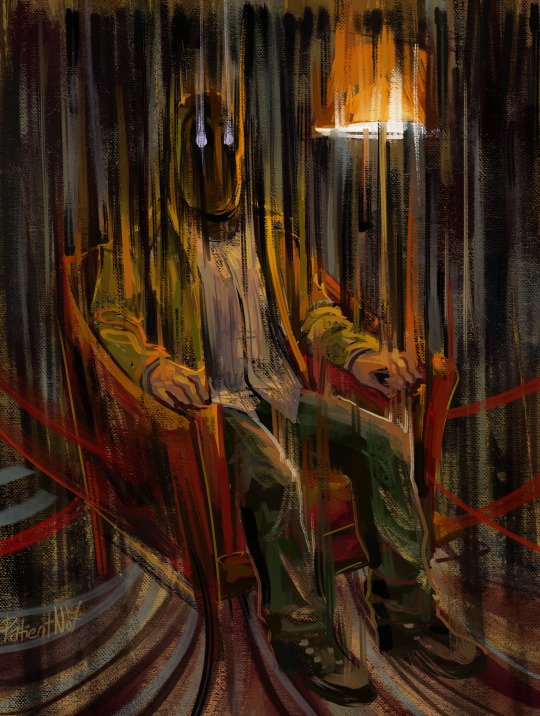
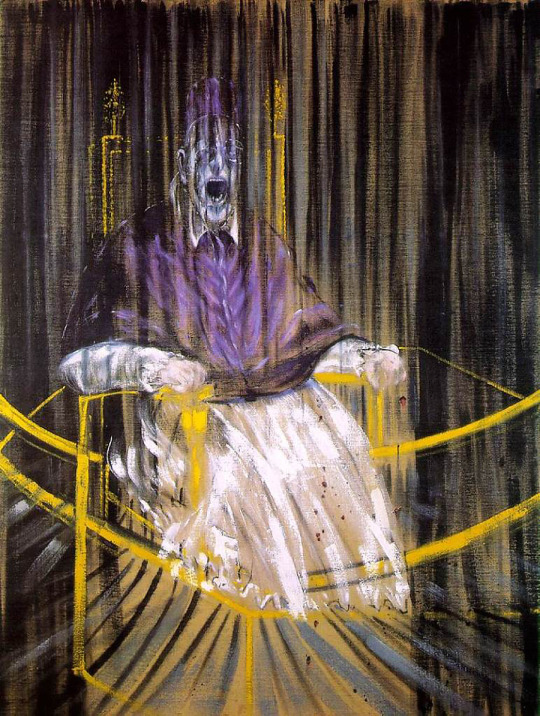
Clickolding (game by Strange Scaffold) // Francis Bacon's Study after Velázquez's Portrait of Pope Innocent X (1953)
#i can do aynthing i want forever#ooo you wanna play Clickolding so bad oooo#clickolding#strange scaffold#francis bacon
309 notes
·
View notes
Text
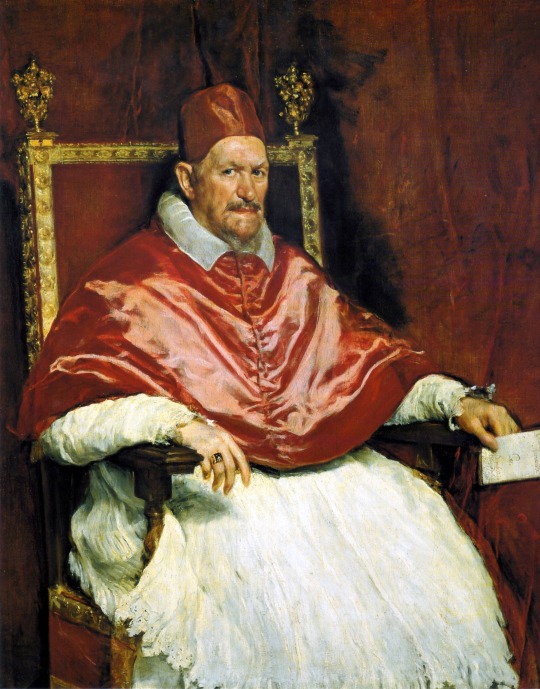
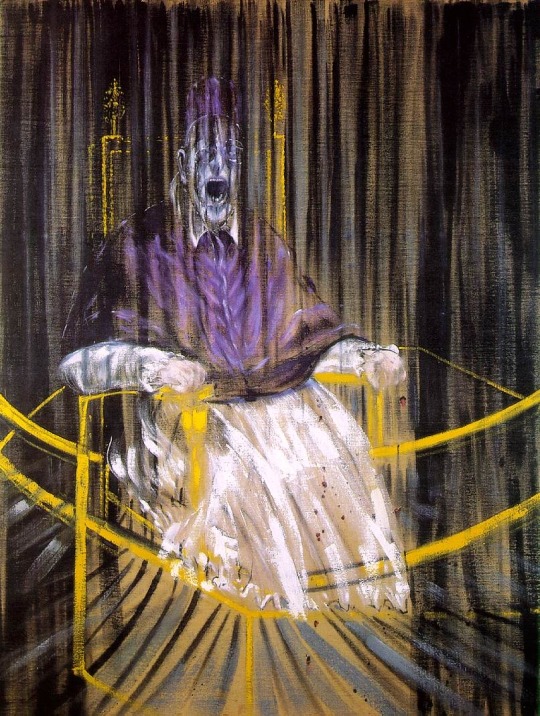
Diego Velázquez, Portrait of Pope Innocent X, 1650
Francis Bacon, Study After Velazquez's Portrait of Pope Innocent X, 1953
#diego velázquez#francis bacon#spanish painter#british painter#british art#british painting#modern art#art history#aesthetictumblr#screaming pope#tumblraesthetic#tumblrpic#tumblrpictures#tumblr art#tumblrstyle#aesthetic#artists on tumblr#tumblrposts#beauty
267 notes
·
View notes
Text

Francis Bacon - Study after Velázquez's Portrait of Pope Innocent X (1953)
74 notes
·
View notes
Note
love what youre doing here, this is an inspired axis upon which to critique art
i Must know your thoughts on francis' bacon's 1953 "study after velázquez's portrait of pope innocent x." ive always found it a fascinating piece, and im pretty sure it draws a lot of inspiration from goya's black-painting-era work.

So, for a quick reference, this is the painting this is a study of:
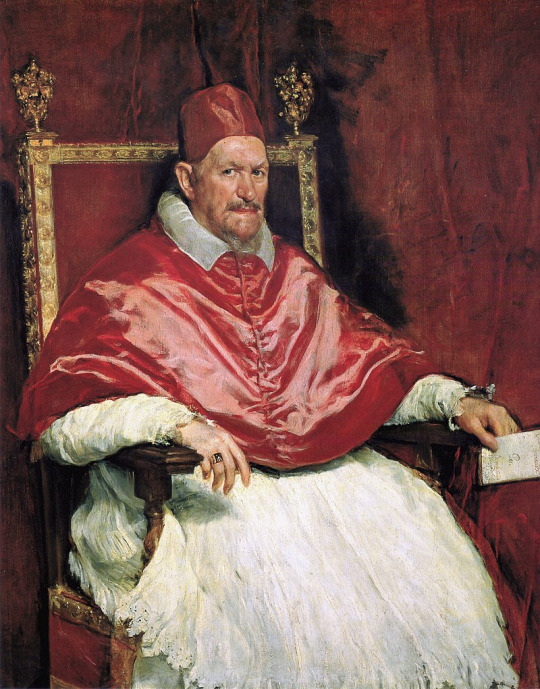
Bacon had a period where he liked to do studies like this of classic works.
This one depicts Pope Innocent X as a rotting figure in a a chair that almost seems to glow. Is this rotting figure screaming or has it simply rotted so much that it's mouth has fallen open?
To me this painting very much feels like an inversion of the original. The delicate lace and warm colors present in the first are replaced with the loosely painted details and cool colors of the second. Instead of being a painting of a calm man who speaks for God, it is the painting of a corpse assailed by holy light, seemingly in agony from it.
Personally, I like to read some divine agony into the painting. There is something divine occurring to Innocent, or maybe even around him with no regard for him, and it is agonizing, if it has not killed him already.
I think the hatred the Christian God can impose on his creations is something I find kind of erotic. There's this immense power from above that you can never understand, only hope that it loves you as you're told it does. It does not speak to you, it is detached and cold. And yet you know it's wrath is absolute, that it could kill you all in a moment. There's something, in my outsider view, that enjoys that in a way. Total helplessness and complete power, with no chance to break out of the system.
Generally, I also think my view of the Christian God skews very Eldritch, which is sexy, so...
Also, I'll be up front, holy vestments get me going.
Rot is also really sexy. The degradation of the familiar as it returns to what it came from to feed the earth around it, that's hot.
Overall, for me, this one is a 9/10. Another pretty solid one from Francis Bacon! Also, feel free to share your interpretations in the replies, I do love to hear people's thoughts, even just on the painting itself, devoid of eroticism.
68 notes
·
View notes
Text
SET TEN - ROUND ONE - MATCH THREE


“Study after Velázquez's Portrait of Pope Innocent X” (1953 - Francis Bacon) / "Untitled (He Plays Very Badly)" (2020 - David Shrigley)
STUDY AFTER VELÁQUEZ'S PORTRAIT OF POPE INNOCENT X: [no additional commentary] (submitted by both @gaysheep and anonymous)
UNTITLED (HE PLAYS VERY BADLY): It’s genuinely so hard to articulate what this piece means to me other than to say that I also find that my art keeps me from destroying things and I remember that very strongly when I look at this art. (@chaos-lioness)
(“Study after Velázquez's Portrait of Pope Innocent X” is an oil on canvas painting by Irish-born British artist Francis Bacon. It measures 153 x 118 cm (60 x 46.5 in) and is held by the Des Moines Art Center.
"Untitled (He Plays Very Badly)" is an ink drawing by British artist David Shrigley. It measures 29.7 x 42cm (11.7 x 16.5 in).
128 notes
·
View notes
Text






SUFFERING; DEPICTIONS BY FRANCIS BACON
1/ Painting, 1946 (1946)
This painting depicts a man under an umbrella. He is surrounded by carcasses of meat that suggest a theme of ritual sacrifice and the brutality in human existence. This composition reflects Bacon's interest in life's dark aspects.
2/ Study for a Portrait (1952)
It depicts a screaming, deformed face that is falling apart, which represents some form of psychological distress. The painting exemplifies Bacon's style of distorting the human form to express the anguish and uncertainty of the human condition.
3/ Three Studies for Figures at the Base of a Crucifixion (1944)
This triptych, inspired by Aeschylus's "Oresteia," depicts three contorted, screaming figures that evoke the emotional upheaval of post-war society. It launched Bacon's career and established his reputation for creating unsettling, visceral works.
4/ Study after Velázquez's Portrait of Pope Innocent X (1953)
The painting is more of an interpretation by Bacon of Velázquez's portrait of Pope Innocent X; it distorts the figure, creating unease and discomfort in the viewer. It tries to show how much Bacon could reinterpret the classics in his unique way.
5/ Figure with Meat (1954)
It is a depiction of a human figure seated and distorted in some strange way in between two pieces of beef, evoking themes of violence, mortality, and the grotesque. It reflects Bacon's fascination with the human body and its fragility
6/ Study for a Portrait of Van Gogh IV (1957)
It depicts a distorted, anguished figure in a landscape, inspired by the tortured self-portraits of Vincent van Gogh. The painting exemplifies Bacon's distinctive style of fragmented, visceral figures that convey the psychological turmoil of the human condition.
12 notes
·
View notes
Photo
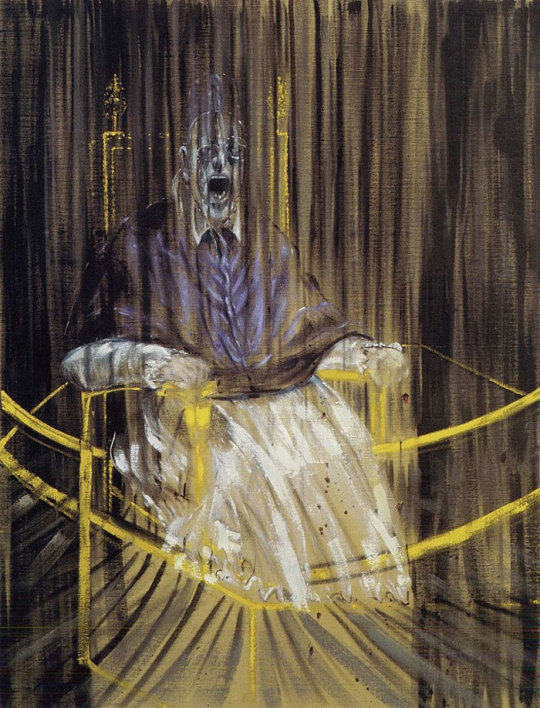
Study After Velázquez's Portrait Of Pope Innocent X
Artist: Francis Bacon | Year (completed): 1953 | Style: Expressionism
In 1649, Pope Innocent X commissioned Velázquez to paint his portrait. Many artists and critics deem Portrait of Innocent X the finest portrait ever created. Velázquez, however, did not flatter his subject or try to showcase him in a better light. The Pope's portrait is renowned for its realism. It honestly portrays a highly educated, cunning, but aging man. Despite seeing it just once, Francis Bacon used Velázquez's painting as the source material. It’s important to note that Bacon never painted from life and preferred to use various visual sources, such as commissioned and found paintings. In Study After Velázquez's Portrait Of Pope Innocent X, Bacon could paint the Pope in an even less favorable manner than Velázquez did. In Bacon's interpretation, the Pope is depicted screaming, but the enclosing draperies and the deep, dark colors seem to "hush" his voice. The dark background hues give the picture a horrible and nightmare-like tone. Bacon's response to why he kept returning to Velázquez's portrait was that he had nothing against popes and was only looking for "an excuse to use these colours."
#francis bacon#artist#art#expressionism#pope innocent x#velazquez#portrait#study after velazquez's portrait of pope innocent x
108 notes
·
View notes
Text

Study after Velázquez's Portrait of Pope Innocent X - Francis Bacon 1953
#francis bacon#art#study after Velazquez's portrait of pope innocent x#modern art#master piece#gothic#horror art
5 notes
·
View notes
Text
Due to being on vacation, I've gone to a bunch of art museums today, both of which ended up being somewhat tangentially associated with gay artists (John Singer Sargent at one and then flipping open a book at the gift shop at the other only to get blasted with exposed dicks cuz it had a bunch of stuff from Vince Aletti's collection lmao)
This ultimately led me down an Interesting wiki dive that sort of went like this
Vince Aletti -> Had a photo from the "Couplings" exhibit featuring Francis Bacon artwork -> Wiki page for Francis Bacon because I remember his "Portrait of Innocence X" -> Starts reading his biography because I'm gay -> "oh those are the Black Triptychs" -> "FUCK T_T"
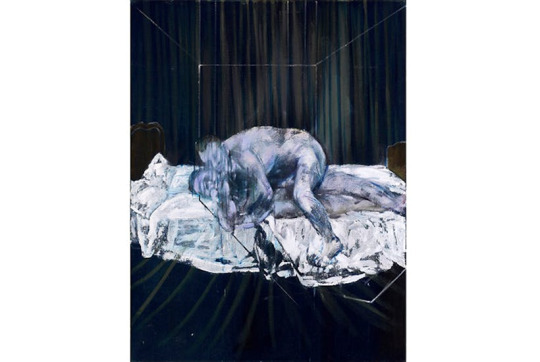
Two Figures (1953)

Study after Velázquez's Portrait of Pope Innocent X
The Black Triptychs ended up being my stopping point on this dive because it was. Christ, it was intense. I won't go into the details of the context, mostly because I'm sure there's already been plenty said about it but also because I'm more interested in examining something my friend said they felt when they looked at them. They said that it "feels painful to look at, specifically to even parse what's going on." Here's the three triptychs below:
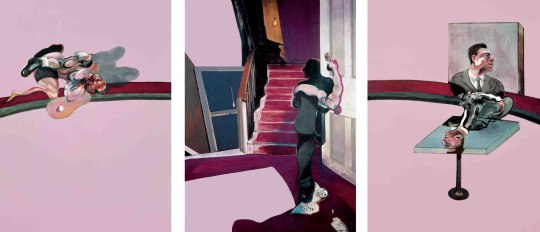
In Memory of George Dyer

Triptych - August 1972

Triptych, May–June 1973
A lot of Francis Bacon's art tends to have this indecipherable blobby mess look to it, in all fairness, but in these cases the mess becomes much more visceral given the context. The indistinct pools or purple and red become puddles of sickly, bloody vomit. The discolored skin of the figure becomes an indication of impending death or just straight up a corpse. I can't help but feel as if these paintings are an attempt to let us feel a fraction of the feelings that Bacon himself felt when finding Dyer dead from his successful suicide attempt. I myself feel confusion, visceral disgust, pity, sadness, tl;dr these paintings make me feel like shit. I imagine that this intense mix of emotions is what it must have felt like for Bacon at the time. Complicated, disturbing, a complete mess. Just magnified by an unknowable amount.
The one that kills me the most is the first one, honestly: In Memory of George Dyer. And it's mostly because of the progression in each part of the piece. A mangled body, a lifeless entrance to a home, a portrait of Dyer and what I can only assume to be Bacon himself on the bottom bleeding into each other before the ink leaves both portraits altogether. It feels the most like death to me.
#sene's brainrot corner#francis bacon#the black triptychs#george dyer#finding these paintings made me sad lmao#so I felt like ranting a bit about them
2 notes
·
View notes
Text
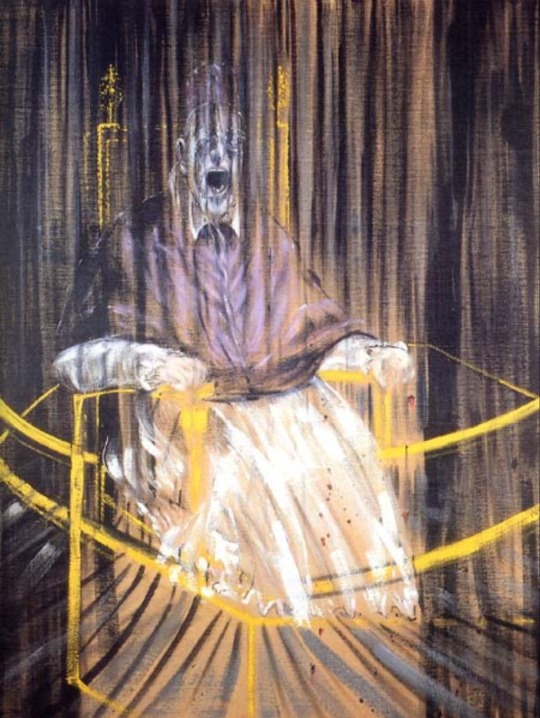
Study after Velázquez's Portrait of Pope Innocent X ○ Francis Bacon ○ 1953
#Study after Velázquez's Portrait of Pope Innocent X#francis bacon#pope#pope innocent#pope innocent x#art#artists#artist#1950s
7 notes
·
View notes
Text
Francis Bacon Papal Portraits of 1953.
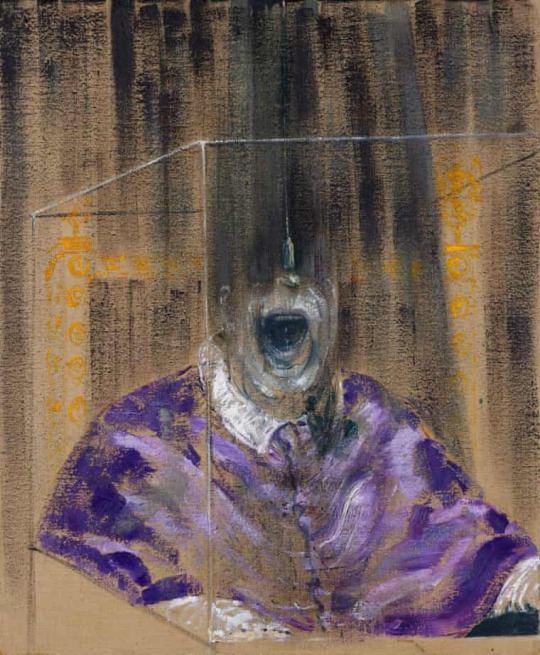
Throughout his long career, Francis Bacon (1909‑1992) steadfastly focused on the human figure as the subject of his paintings. Unlike other major artists of his time who reveled in abstraction, such as Jackson Pollock and Barnett Newman, Bacon never deviated from his commitment to making images of people. Yet while extending the timeless tradition of figuration, he invented profound and startling new ways of portraying people as he distorted the inhabitants of his painterly world in order to ‘unlock the valves of feeling and therefore return the onlooker to life more violently.’
Bacon’s most recognizable image, and hence most famous painting, is the screaming pope of Study after Velázquez’s Portrait of Pope Innocent X, 1953. The picture was inspired by Diego Velázquez’s extraordinarily lifelike portrait of a powerful and unscrupulous pope who duplicitously took the name Innocent. Painted in 1650 at the height of the Baroque period, shortly after his arrival in Rome from Spain, it was Velázquez’s eminently successful attempt to rival the portraiture of Titian and the great painters of Italy. The subject of the painting is arguably the most powerful man in the world. He sits confidently on the papal throne, fully at ease ex cathedra—literally, from the cathedral seat—as God’s representative on earth.

The true brilliance of Velázquez’s accomplishment in this painting is to have satisfied his demanding papal client with a flattering, beautifully rendered portrait while at the same time passing on for the ages the unmistakable hint of corrupt character and deep‑seated deceit behind that well‑ordered and stern façade.
‘Haunted and obsessed by the image…by its perfection,’ Bacon sought to reinvent Velázquez’s Portrait of Pope Innocent X in the papal portraits that form the focus of this book. In the great painting from the Des Moines Art Center, the Study after Velazquez’s Portrait of Pope Innocent X, Bacon updates the seventeenth‑century image by transforming the Spanish artist’s confident client and relaxed leader into a screaming victim. Trapped as if manacled to an electric chair, the ludicrously drag‑attired subject is jolted into involuntary motion by external forces or internal psychoses. The eternal quiet of Velázquez’s Innocent is replaced by the involuntary cry of Bacon’s anonymous, unwitting, tortured occupant of the hot seat. One could hardly conceive of a more devastating depiction of postwar, existential angst or a more convincing denial of faith in the era that exemplified Nietzsche’s declaration that God is dead.
In Bacon’s words: ‘Great art is always a way of concentrating, reinventing what is called fact, what we know of our existence—a reconcentration…tearing away the veils that fact acquires through time. Ideas always acquire appearance veils, the attitudes people acquire of their time and earlier time. Really good artists tear down those veils.’
In much the same spirit that Velázquez went to Rome, determined to vie with the state portraits of Titian and remake them in the image of his time, Bacon’s papal variations are his attempt to reinvent or reinterpret Velázquez’s image in a way that would be valid for the mid‑twentieth century. To accomplish this reinvention, Bacon essentially replaced the grand, official state portrait with an intimate, spontaneous, candid camera glimpse behind the well‑ordered exterior. While Velázquez portrayed the pope ex cathedra, Bacon might be said to have captured him in camera–as if behind a closed door or through a one‑way mirror. While Innocent directly confronts his audience with a confident, almost contemptuous gaze, Bacon’s pope, preoccupied by pain, seems oblivious to observation."
0 notes
Text
I decided to do a study on Francis Bacon.
The Irish born artist was known for his unsettling imagery, which I thought would pair well with my theme for this project, which is nightmares. His use of colour and the way he contorts the body in his paintings is quite interesting to me because it takes a great deal of knowledge about anatomy to be able to do what he did.


(The painting names in order: Study after Velázquez's Portrait of Pope Innocent X 1953, Painting 1946)
The colours in these paintings are quite bright and lively in comparison to their subject matter of the contorted gruesome shapes. In a strange way, the use of colours and the unsettling imagery work very well together and add another level of uncomfortably.

(Crucifixion 1933)

These images remind me of the painting above (Crucifixion 1933), with the figure being unrecognisable. With these images, I tried to use colour and editing techniques to the best of my ability and contort the shape of the person behind to create that unsettling image. Francis Bacons' use of colour reminds me of these images. Not unlike his paintings, the use of colour matched with the contorted figure add another level of discomfort.
I would like to bring his techniques into more of my art. The brush strokes in Study after Velázquez's Portrait of Pope Innocent X 1953, disrupt the image quite a bit. I would like to try being more free with my paintings like he was. I would also like to try being more abstract with my art whilst still getting the image across as what it needs to be perceived as.
1 note
·
View note
Text


Left: Francis Bacon, Study after Velázquez's Portrait of Pope Innocent X, 1953
Right: Francis Bacon, Study after Velázquez, 1950
#francis bacon#british artist#british art#british painting#british painter#modern art#art history#figurative art#queer art history#queer artist#queer painter#aesthetic#aesthetictumblr#tumblraesthetic#tumblrpic#religious aesthetic#tumblrpictures#tumblr art#tumblrstyle#artists on tumblr
7 notes
·
View notes
Text
Exploring the Abyss: The Unsettling Genius of Francis Bacon's Paintings
Francis Bacon, one of the most celebrated British painters of the 20th century, is renowned for his compelling, often disturbing, depictions of the human condition. His work, brimming with raw emotion, psychological depth, and brutal honesty, pushes the boundaries of traditional portraiture, forcing viewers into a confrontation with humanity's darker aspects. This blog post aims to delve into the fascinating world of Francis Bacon's paintings and their profound impact on contemporary art.
Distortion and Despair
Bacon's art stands as a stark counterpoint to the idea of art as a pursuit of beauty. His paintings often feature grotesque, distorted figures that evoke feelings of terror, anguish, and alienation. His subjects, frequently isolated in nondescript, claustrophobic spaces, appear trapped in their emotional turmoil, amplifying the sense of existential dread that pervades Bacon's work.
Iconic Imagery
One of Bacon's most famous works, "Three Studies for Figures at the Base of a Crucifixion" (1944), showcases his characteristic style and themes. The painting features three panels, each with a grotesquely distorted figure set against an empty, orange background. The figures, inspired by the Eumenides—vengeful deities from ancient Greek mythology—invoke a sense of fear and repulsion. Yet, their torment elicits empathy, a poignant reflection of the post-war disillusionment that marked the era.
In "Study after Velázquez's Portrait of Pope Innocent X" (1953), Bacon reinterprets Diego Velázquez's famous portrait, transforming the Pope into a nightmarish figure. The screaming Pope, enclosed in a glass cage, becomes a symbol of psychological distress and existential anxiety, a stark contrast to the calm authority of Velázquez's original.
Bacon's Impact and Legacy
Francis Bacon's influence on contemporary art is undeniable. His unflinching exploration of the human psyche, his groundbreaking approach to figuration and space, and his bold, expressive style have inspired countless artists, from Damien Hirst to Jenny Saville. His influence extends beyond the art world, with elements of his aesthetic appearing in the realms of fashion, film, and literature.
Despite the often unsettling nature of his work, Bacon's paintings command immense admiration and demand at auctions. His triptych "Three Studies of Lucian Freud" (1969) set a record for the most expensive artwork ever sold at auction in 2013, reflecting the enduring allure of his work.
Conclusion: A Mirror to the Abyss
Francis Bacon's paintings, with their raw emotional intensity and uncompromising honesty, offer a deeply affecting exploration of the human condition. His work invites us to confront our fears, to gaze into the abyss of the human psyche, and to question the very nature of our existence.
In an era marked by profound uncertainty and change, Bacon's work continues to resonate, providing a potent reminder of art's power to provoke, disturb, and ultimately, to illuminate the darker corners of our existence. Through his extraordinary vision, Francis Bacon compels us to confront the discomforting aspects of our humanity, and in doing so, he broadens our understanding of what it means to be human.
0 notes